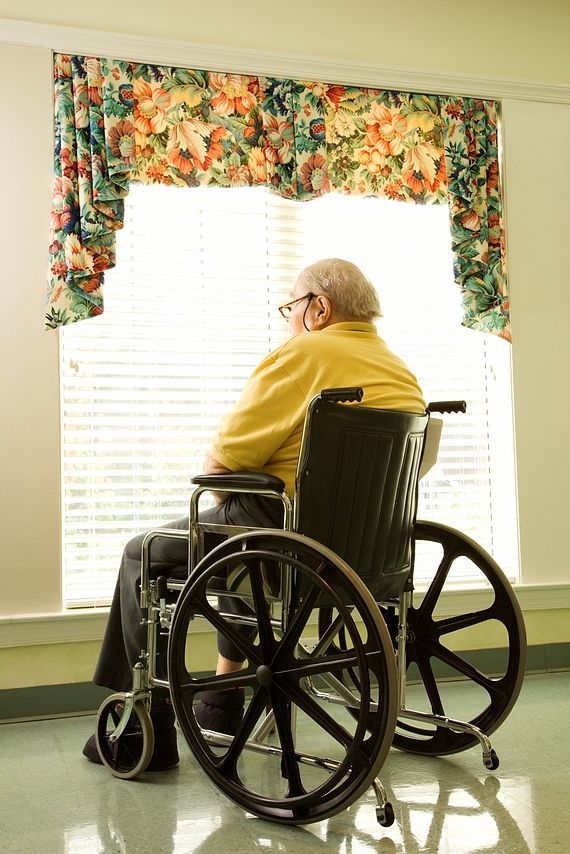Do you feel the urge top open the windows when visiting your grandparents? That would improve the indoor air quality found PhD student Marina de Almeida-Silva, but not the amount of particulate matter.
An increasing number of elderly people live in elderly care centres (ECCs) in Portugal. The number of such centres has increased by 50 % since 1998. As an environmental health expert from the Lisbon School of Health Technology (ESTeSL), Marina de Almeida-Silva became interested in the role of indoor air quality on the health of the inhabitants.
She argues that older people are more sensitive to air quality, perhaps because of impaired lung function and deteriorated overall health. They are inside most of the day, so the exposure to indoor air pollution is increased. Plus their relative demographic number increases, which makes it all the more necessary to keep the elderly healthy to reduce the costs of care.
For her PhD research, she characterized the indoor air at ten elderly care centres located in Lisbon and Loures, Portugal. She also equipped volunteers with a particulate matter monitor, which they had to carry along for 24 hours. Almeida-Silva calculated the deposited dose of the particles in a person’s respiratory tract by modelling.
The study showed that senior citizens spend 95% of their time indoors, mostly in the bedroom and the living room. This finding confirmed the expected high exposure to indoor air quality.
Ventilation was found to be inadequate, which led to high concentrations of CO2, exceeding the Portuguese limit values. Another problematic pollutant were organic fumes (Volatile Organic Compounds of VOCs) originating from furniture, vinyl wall coverings and cleaning products.
The study into particulate matter (PM) showed peaks in the bedroom when people rose and in the living room when people moved about, which seems to be related to movement –re-suspending dust into the air. There was little difference between the amount of particulate matter indoor and outdoors, with a substantial part indoors coming from traffic and secondary aerosols (21% for both sources).
Almeida-Silva concludes that elderly care centres should be placed at locations where the concentration of particles is lowest. A highway or airport at less than 500 metres distance clearly contributed to the concentration of indoor’ pollutants.
That is why just opening the windows to get some ‘fresh air’ is not enough sometimes, especially not for elderly people with an increased sensitivity.
A similar study, by Dr. Carla Alexandra Ramos, focussed on the exposure of active athletes both indoor and outdoor. Both studies made use of neutron activation analysis (NAA) for the chemical analysis of trace elements in the air samples.
• Marina de Almeida-Silva, Elderly exposure to air pollutants – measuring, assessing and modelling, PhD supervisors Prof. Bert Wolterbeek (AS) and Dr. S. Marta Almeida, Defence: January 19, 2016.

The study into particulate matter (PM) showed peaks in the bedroom when people rose and in the living room when people moved about, which seems to be related to movement –re-suspending dust into the air. There was little difference between the amount of particulate matter indoor and outdoors, with a substantial part indoors coming from traffic and secondary aerosols (21% for both sources).
Almeida-Silva concludes that elderly care centres should be placed at locations where the concentration of particles is lowest. A highway or airport at less than 500 metres distance clearly contributed to the concentration of indoor’ pollutants.
That is why just opening the windows to get some ‘fresh air’ is not enough sometimes, especially not for elderly people with an increased sensitivity.
A similar study, by Dr. Carla Alexandra Ramos, focussed on the exposure of active athletes both indoor and outdoor. Both studies made use of neutron activation analysis (NAA) for the chemical analysis of trace elements in the air samples.
• Marina de Almeida-Silva, Elderly exposure to air pollutants – measuring, assessing and modelling, PhD supervisors Prof. Bert Wolterbeek (AS) and Dr. S. Marta Almeida, Defence: January 19, 2016.



Comments are closed.